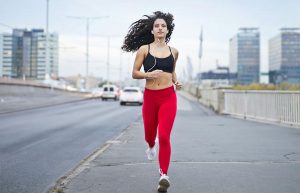Welcome back, in this post, we are going to discuss part two of Things I Wish I knew Before Climbing Kilimanjaro. In case you didn’t read the first part, we covered the climb not being technical and packing according to the gear list, especially when it comes to the cold and wet conditions on Kilimanjaro. We also discussed tipping your guides and porters.
So moving right along, In this post, we are going to talk about one important item you should bring on your trip, buffs.
Buffs
Buffs are great for traveling to Tanzania. First of all, they pack down small and are lightweight. This makes it easy to bring a few of them. If you are like me, you’ll find many uses for them so in turn will need several.
You should wear it around your neck each day. It makes a great cover-up from the sun. At high altitudes, the sun is pretty intense.
It also is a great way to block the dust. When you are descending from the summit we recommend having one to cover your mouth and nose from the fine particles of volcanic dust that get kicked up.
When you are hot, you can also get it wet to cool you down.
Additionally, if you don’t have an eye mask and you climb during a full moon, you can wear one over your eyes to block the bright light while sleeping.
And finally, if you go on safari, the roads are dusty and the buff is a good way to block the dust from the roads.
Eye Masks
As we mentioned above, bring an eye mask. Especially if you are a light sleeper and your climb dates fall during a full moon. The tents do not block the bright moonlight and may make it tough to sleep. Wearing an eye mask will block most of the light.

Ear Plugs

Why earplugs? One word. Snoring! Climbing Kilimanjaro is a challenge for most people. Hiking for so many days is not something that most people do. They will be very tired. This means they will sleep deeply and may snore like an angry bear. Bring some earplugs so you too can sleep deeply and in turn snore like an angry bear.
Private Toilet Tent
Speaking of bathrooms… Where do you go to the bathroom on Kilimanjaro? There are three types of toilets on Kilimanjaro. One is the original bathrooms which are the “long-drop” pit toilets. The way they work is several porters will dig a large hole. They will move a previously constructed wooden shack that currently resides over a full pit to the new pit. Hopefully, that paints a good enough picture in your head so we don’t have to explain it further.
The second toilet is the newer composting toilet. They are a permanent structure. They have concrete floors with a wooden building around them. There is a locking door and a hole in the floor. You straddle the hole to do your business. In this position, people apparently find it difficult to aim…
The third and highly recommended toilet is a private toilet tent. You can rent them. There is a porter that sets up, cleans, and takes down the tent at each campsite. They are the most sanitary and the preferred way to use the facilities.
You can see more by watching this video:
Footwear
And finally, make sure to buy and try out appropriate footwear for climbing Kilimanjaro. This doesn’t only mean shoes, but socks as well.
Everyone’s feet are different. We recommend trying different combinations of socks and shoes to see what works for you. The last thing you want is sore and blistered feet after just a few hours or days of hiking. Especially since you are on the mountain for several more days. That can make your climb unbearable.
What works for me is a combination of Injinji original toe socks and Thorlo light hikers. I have tried the Injinji hiking socks but they are too thick and the thick material bunches up around the toes. Some people swear by Smartwool socks, but I get hot spots quickly with them. There are also other brands like Darn Tough and REI. Again, everyone’s feet are different so hike before going to Kilimanjaro and find what works for you.
For shoes, we recommend a light hiking shoe for the dry days, even in the rainforest if isn’t raining. There are several hiking shoe companies like Las Sportiva, Adidas, Soloman, Keen, and Merrell, just to name a few. Wear whatever is comfortable for you.
You can see our review of the Adidas AX4 shoe here: https://kilimanjarosunrise.com/adidas-terrex-ax4-hiking-shoe-review/
When it’s raining or snowing or for summit night we recommend a more traditional hiking shoe. One that is taller like a mid-height hiking boot with Goretex. It should be waterproof and tall enough to walk through snow and water. Wear gaiters to further keep the moisture and dirt and debris out.
You can see our review of the Mammut Ducan Boot here: https://kilimanjarosunrise.com/mammut-ducan-high-gtx-hiking-boot-kilimanjaro-review/
Whatever combination of shoes and socks you choose to go with, wear them several times and over several miles of hiking before heading to Tanzania. Break them in so your feet are as comfortable as possible before heading up the mountain. For more information on footwear, you can watch this video:




